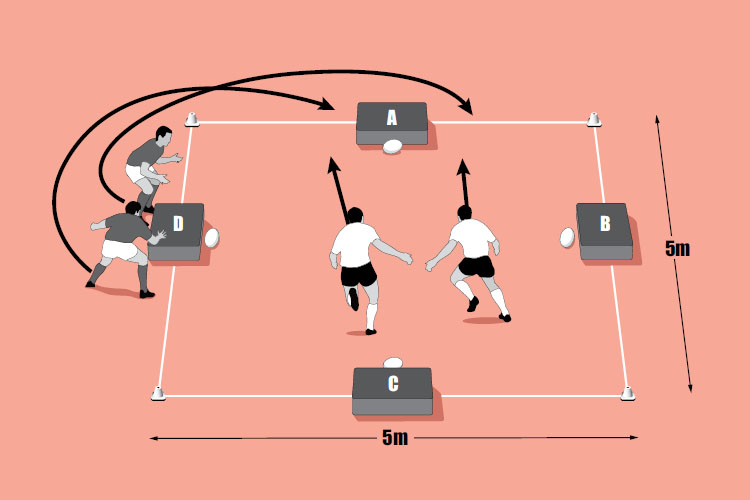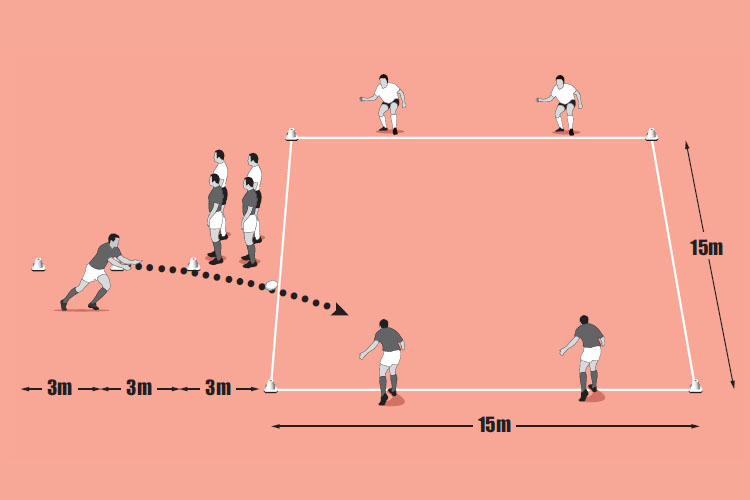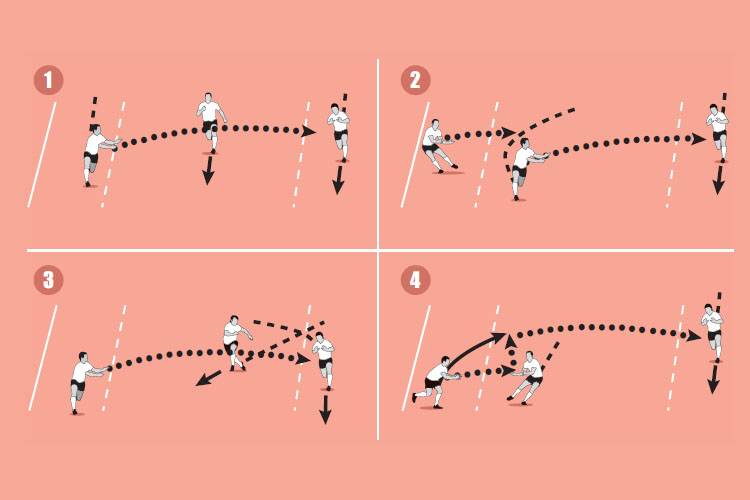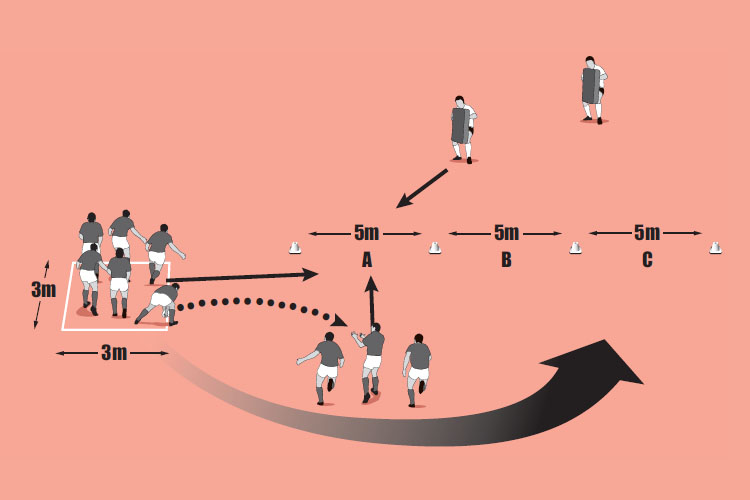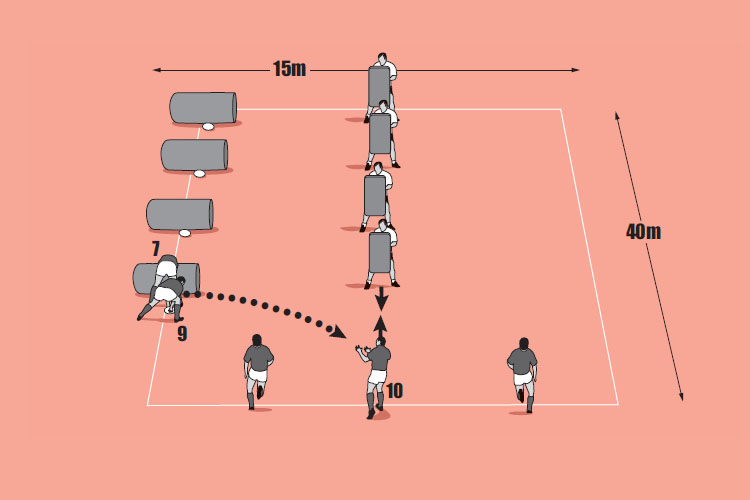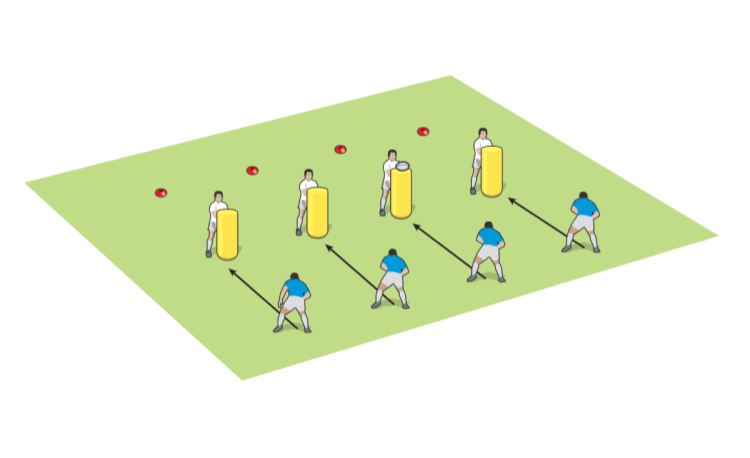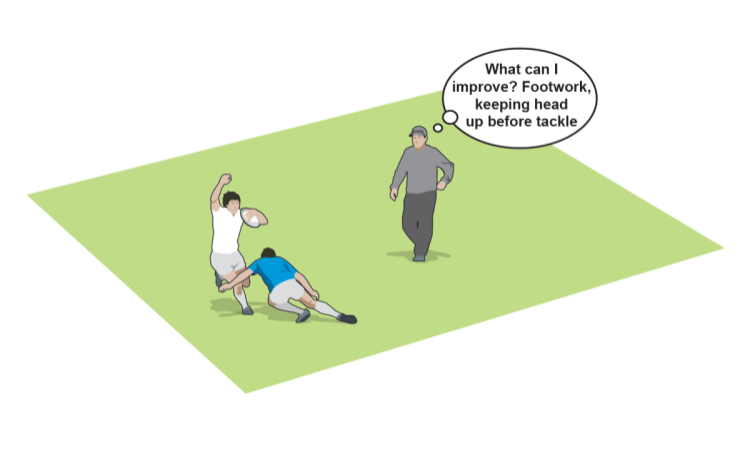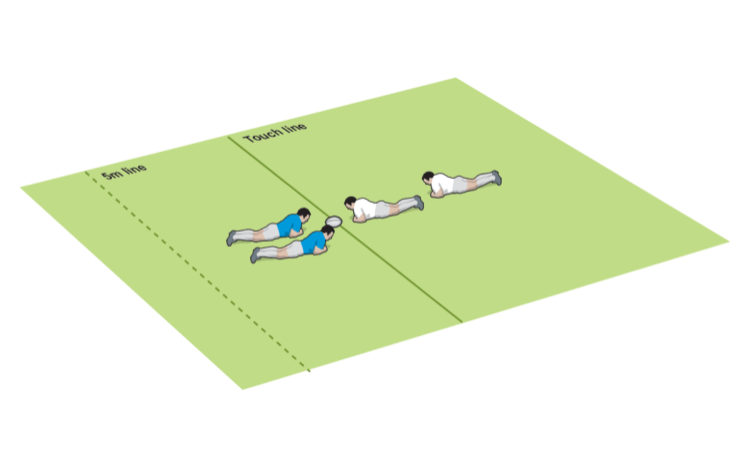You are viewing
1 of your 2 free articles
Defending the edges
In essence, lots of time is spent on positioning players to tackle and not enough time on setting and then tackling under fatigue conditions. As the French found out, almost to their cost, in the World Cup semi-final, it only takes one small slip for a player like Mike Phillips to slip through the hole.
Warm up time: 5-7
Session time: 8-10
Development time: 10-15
Game time: 10-15
Warm down time: 5-8
What to think about
I have covered lots of defence stuff on getting into position...this session is on making the players more aware of what is happening before they get into position. To do this, the session sneakily breaks player concentration because the defender might not have to make the tackle at that ruck, or indeed the next ruck. He might also be making two or three consecutive tackles. The mental challenge is to make a good tackle every time, so this session works on strong technique under pressure.set-up
- First player to the ruck, get to the far side, set and say so.
- Second player, nearside of the ruck and do the same.
- Go forward when the ball is picked up. Don’t give up the inside channel at the ruck.
What you get your players to do
Set up a 5m square box as in picture 1, with two attackers in the middle and two defenders on the outside. Call out a letter (or ruck pad) and the defenders and attackers move to that ruck pad (see picture 2). The first attacker either passes or goes himself. Attackers aim to get out of the box in front of them without going over the ruck pad. Use full contact. You release the attackers whenever you want (you could countdown from five). Repeat several times before swapping roles of attackers and defenders. The defenders have to run outside the box to get into position.Development
Add one more attacker and one more defender. Have both sets of players outside the box then nominate who will attack and who will defend before saying which ruck pad to run to.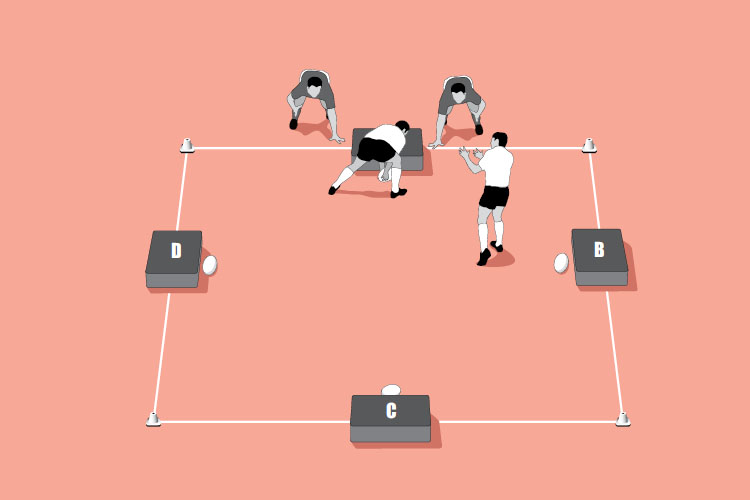
Game situation
In a 20m x 10m box, three defenders first defend ruck pad A (see picture 3) and then go to ruck pad B and then run to C. They can run through the box to get into position. The attack does not have to wait for the defenders to be in position but because there is an overload on the defence team, it is likely the defenders will have enough time to get back into position. Once a tackle is completed or a try is scored, call “break”, which means the players run to the next ruck pad.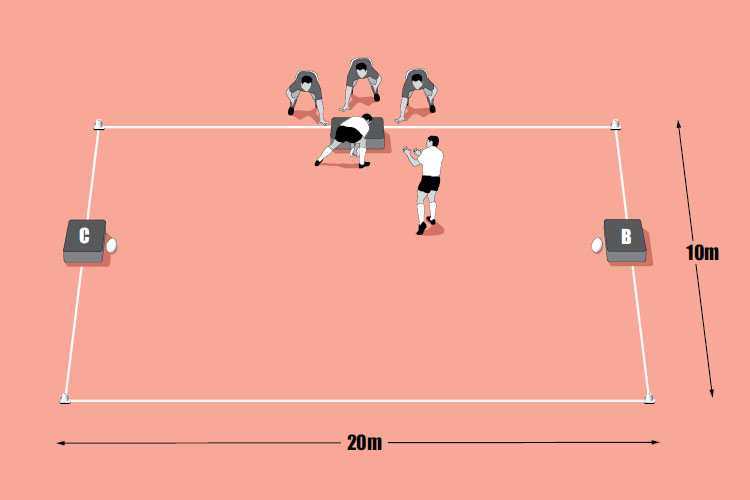
What to call out
- “Keep low at the edges of rucks”
- “Look at the ball and not at the player in front – come forward and close down the space at the edge of the ruck”
- “Don’t flop forward, keep pumping the legs and driving up”
Newsletter Sign Up
Coaches Testimonials

Gerald Kearney, Downtown Las Vegas Soccer Club

Paul Butler, Florida, USA

Rick Shields, Springboro, USA

Tony Green, Pierrefonds Titans, Quebec, Canada
Subscribe Today
Be a more effective, more successful rugby coach
In a recent survey 89% of subscribers said Rugby Coach Weekly makes them more confident, 91% said Rugby Coach Weekly makes them a more effective coach and 93% said Rugby Coach Weekly makes them more inspired.
Get Weekly Inspiration
All the latest techniques and approaches
Rugby Coach Weekly offers proven and easy to use rugby drills, coaching sessions, practice plans, small-sided games, warm-ups, training tips and advice.
We've been at the cutting edge of rugby coaching since we launched in 2005, creating resources for the grassroots youth coach, following best practice from around the world and insights from the professional game.
